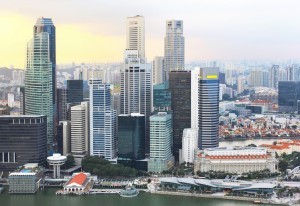Rent hikes for CBD Premium and Grade A offices slower in Q2
 Rent increases for central business district (CBD) premium and Grade A offices have been slower in Q2 2018 at 2.6 percent, down from 4.8 percent during the previous quarter.“We view the slower pace of rent increase as a momentary consolidation following the leasing market’s rapid recovery which saw an 11 percent year-on-year growth from Q2 2017,” said Duncan White, head of office services at Colliers International.The firm forecast Singapore CBD rents to increase by about 10 to 12 percent year-on-year this year, given the tighter vacancy within the CBD premium and Grade A office segment and the growing demand from professional services, technology, financial and flexible workspace firms, reported Singapore Business Review.By 2019, the rental hikes are expected to moderate to about five to seven percent year-on-year, it said.“Given that office rents have climbed by some 7.5 percent year-to-date, Colliers expects steady rental upticks to continue over the rest of 2018.”Colliers International noted that all office micro-markets, including Grade B buildings within the CBD, also witnessed rental growth during the period under review. Raffles Place/New Downtown and Shenton Way/Tanjong Pagar posted the highest year-on-year increases at 16.1 percent and 15.4 percent respectively.“This was likely driven by the newly completed Marina One in the New Downtown and Frasers Tower in Tanjong Pagar, which has consistently transacted in excess of $10 on effective rents.”The firm described the stream of anchor tenants flocking to Paya Lebar Quarter’s office towers as positive for city fringe districts.“The strong rental upturn over 2018-2019 should accentuate the attractiveness of decentralised micro-markets, and prompt occupiers to consider City Fringe Grade A developments that can bridge the gap between cost and value,” explained Colliers International senior analyst JM Tan.Prime office rents within the city fringe rose 9.1 percent year-on-year in Q2 2018 to $7.28 psf per month, or up 3.9 percent from Q1 2018.Source: CommercialGuru, 17 August 2018
Rent increases for central business district (CBD) premium and Grade A offices have been slower in Q2 2018 at 2.6 percent, down from 4.8 percent during the previous quarter.“We view the slower pace of rent increase as a momentary consolidation following the leasing market’s rapid recovery which saw an 11 percent year-on-year growth from Q2 2017,” said Duncan White, head of office services at Colliers International.The firm forecast Singapore CBD rents to increase by about 10 to 12 percent year-on-year this year, given the tighter vacancy within the CBD premium and Grade A office segment and the growing demand from professional services, technology, financial and flexible workspace firms, reported Singapore Business Review.By 2019, the rental hikes are expected to moderate to about five to seven percent year-on-year, it said.“Given that office rents have climbed by some 7.5 percent year-to-date, Colliers expects steady rental upticks to continue over the rest of 2018.”Colliers International noted that all office micro-markets, including Grade B buildings within the CBD, also witnessed rental growth during the period under review. Raffles Place/New Downtown and Shenton Way/Tanjong Pagar posted the highest year-on-year increases at 16.1 percent and 15.4 percent respectively.“This was likely driven by the newly completed Marina One in the New Downtown and Frasers Tower in Tanjong Pagar, which has consistently transacted in excess of $10 on effective rents.”The firm described the stream of anchor tenants flocking to Paya Lebar Quarter’s office towers as positive for city fringe districts.“The strong rental upturn over 2018-2019 should accentuate the attractiveness of decentralised micro-markets, and prompt occupiers to consider City Fringe Grade A developments that can bridge the gap between cost and value,” explained Colliers International senior analyst JM Tan.Prime office rents within the city fringe rose 9.1 percent year-on-year in Q2 2018 to $7.28 psf per month, or up 3.9 percent from Q1 2018.Source: CommercialGuru, 17 August 2018
